Cost Efficient Real Time Electricity Management Services for Green Community Using Fog †
Abstract
1. Introduction
2. Related Work
3. Proposed System Model
3.1. Problem Formulation
3.2. Contract for Energy Trade
4. Case Studies
4.1. Discussion and Results
4.2. Case Study: Energy Trade
4.3. Summary of Proposed Solution
5. Conclusions
Author Contributions
Acknowledgments
Conflicts of Interest
References
- Mini, G.; Debajit, P.; Rashmi, M.; Deepa, S. Gender in Electricity Policymaking in India, Nepal and Kenya. In Energy Justice Across Borders; Springer: Cham, Switzerland, 2020; pp. 111–135. [Google Scholar]
- Christina, D.; Gareth, T.; Sarah, B.; Darrick, E.; Nick, P. Acceptance of energy transitions and policies: Public conceptualisations of energy as a need and basic right in the United Kingdom. Energy Res. Soc. Sci. 2019, 48, 33–45. [Google Scholar]
- Saber, A.; Falahati, S.A.; Seyed, A.T.; Mohammad, S. Smart deregulated grid frequency control in presence of renewable energy resources by EVs charging control. IEEE Trans. Smart Grid 2018, 9, 1073–1085. [Google Scholar]
- Jasiński, M.; Sikorski, T.; Kostyła, P.; Kaczorowska, D.; Leonowicz, Z.; Rezmer, J.; Szymańda, J.; Janik, P.; Bejmert, D.; Rybiański, M.; et al. Influence of Measurement Aggregation Algorithms on Power Quality Assessment and Correlation Analysis in Electrical Power Network with PV Power Plant. Energies 2019, 12, 3547. [Google Scholar] [CrossRef]
- Nasir, M.; Anees, M.; Khan, H.A.; Khan, I.; Xu, Y.; Guerrero, J.M. Integration and Decentralized Control of Standalone Solar Home Systems for off-grid Community Applications. IEEE Trans. Ind. Appl. 2019. [Google Scholar] [CrossRef]
- Ryan, K.; Sini, N.; Joseph, S.; Johannes, U. Multilevel customer segmentation for off-grid solar in developing countries: Evidence from solar home systems in Rwanda and Kenya. Energy 2019, 186, 115728. [Google Scholar]
- Fabio, R.; Emanuela, C.; Carlo, P. Towards modelling diffusion mechanisms for sustainable off-grid electricity planning. Energy Sustain. Dev. 2019, 52, 11–25. [Google Scholar]
- Sikorski, T.; Jasiński, M.; Ropuszyńska-Surma, E.; Węglarz, M.; Kaczorowska, D.; Kostyła, P.; Leonowicz, Z.; Lis, R.; Rezmer, J.; Rojewski, W.; et al. A Case Study on Distributed Energy Resources and Energy-Storage Systems in a Virtual Power Plant Concept: Economic Aspects. Energies 2019, 12, 4447. [Google Scholar] [CrossRef]
- Adnan, R.M.; Liang, Z.; Yuan, X.; Kisi, O.; Akhlaq, M.; Li, B. Comparison of LSSVR, M5RT, NF-GP, and NF-SC Models for Predictions of Hourly Wind Speed and Wind Power Based on Cross-Validation. Energies 2019, 12, 329. [Google Scholar] [CrossRef]
- Mubashir, H.R.; Alan, D.; Brendan, J.; Chadi, A. Software Defined Networks based Smart Grid Communication: A Comprehensive Survey. IEEE Commun. Surv. Tutor. 2019. [Google Scholar] [CrossRef]
- Talaat, M.; Abdulaziz, S.A.; Adel, A.; Hatata, A.Y. Hybrid-cloud-based data processing for power system monitoring in smart grids. Sustain. Cities Soc. 2020, 55, 102049. [Google Scholar] [CrossRef]
- Pasetti, M.; Ferrari, P.; Silva, D.R.C.; Silva, I.; Sisinni, E. On the Use of LoRaWAN for the Monitoring and Control of Distributed Energy Resources in a Smart Campus. Appl. Sci. 2020, 10, 320. [Google Scholar] [CrossRef]
- Wang, B.; Wei, Y.M.; Yuan, X.C. Possible design with equity and responsibility in China’s renewable portfolio standards. Appl. Energy 2018, 232, 685–694. [Google Scholar] [CrossRef]
- Zhang, Q.; Wang, G.; Li, Y.; Li, H.; McLellan, B.; Chen, S. Substitution effect of renewable portfolio standards and renewable energy certificate trading for feed-in tariff. Appl. Energy 2018, 227, 426–435. [Google Scholar] [CrossRef]
- Andri, P.; Angeliki, K.; Paris, A.F. The future of the Feed-in Tariff (FiT) scheme in Europe: The case of photovoltaics. Energy Policy 2016, 95, 94–102. [Google Scholar]
- Yu, S.; Park, K.; Lee, J.; Park, Y.; Park, Y.; Lee, S.; Chung, B. Privacy-Preserving Lightweight Authentication Protocol for Demand Response Management in Smart Grid Environment. Appl. Sci. 2020, 10, 1758. [Google Scholar] [CrossRef]
- González, I.; Calderón, A.J. Integration of open source hardware Arduino platform in automation systems applied to Smart Grids/Micro-Grids. Sustain. Energy Technol. Assess. 2019, 36, 100557. [Google Scholar] [CrossRef]
- Vargas-Salgado, C.; Aguila-Leon, J.; Chiñas-Palacios, C.; Hurtado-Pérez, E. Low-cost web-based Supervisory Control and Data Acquisition system for a microgrid testbed: A case study in design and implementation for academic and research applications. Heliyon 2019, 5, e02474. [Google Scholar] [CrossRef]
- Peng, Z.; Hao, L. Hierarchical and Decentralized Stochastic Energy Management for Smart Distribution Systems with High BESS Penetration. IEEE Trans. Smart Grid 2019. [Google Scholar] [CrossRef]
- Yasir, S.; Noel, C.; Mubashir, H.R.; Rebecca, C. Internet of things-aided Smart Grid: Technologies, architectures, applicat ions, prototypes, and future research directions. IEEE Access 2019, 7, 62962–63003. [Google Scholar]
- Adia, K.; Sheraz, A.; Khursheed, A.; Syed, I.H.; Mahmood, A.; Nadeem, J. An efficient energy management approach using fog-as-a-service for sharing economy in a smart grid. Energies 2018, 11, 3500. [Google Scholar]
- Chen, Y.W.; Chang, J. MEMaaS: Cloud-based energy management service for distributed renewable energy integration. IEEE Trans. Smart Grid 2015, 6, 2816–2824. [Google Scholar] [CrossRef]
- Venkatraman, B.; Safa, O.; Moayad, A.; Ismaeel, A.R.; Yaser, J. Low-latency vehicular edge: A vehicular infrastructure model for 5G. Simul. Model. Pract. Theory 2020, 98, 101968. [Google Scholar]
- Miodrag, F.; Mirjana, M. Cloud-fog-based approach for smart grid monitoring. Simul. Model. Pract. Theory 2020, 101, 101988. [Google Scholar]
- Saeed, A.; Saif, U.R.M.; Samee, U.K.; Raymond, C.; Adeel, A.; Naveed, A. A Game-based Thermal-aware Resource Allocation Strategy for Data Centers. IEEE Trans. Cloud Comput. 2019. [Google Scholar] [CrossRef]
- Wang, S.; Zhu, X.; Song, D.; Wen, Z.; Chen, B.; Feng, K. Drivers of CO2 emissions from power generation in China based on modified structural decomposition analysis. J. Clean. Prod. 2019, 220, 1143–1155. [Google Scholar] [CrossRef]
- Thiago, V.L.; Pedro, M.; Aníbal, D.A. A review on energy efficiency and demand response with focus on small and medium data centers. Energy Effic. 2019, 12, 1–30. [Google Scholar]
- Available online: http://www.google.co.uk/about/datacenters/inside/locations/hamina/ (accessed on 17 May 2020).
- Available online: https://www.theguardian.com/environment/2011/oct/27/facebook-green-datacentre-sweden-renewables (accessed on 17 May 2020).
- Chee, N.L.; Iromi, U.R.; Ole-Morten, M.; Lars, N. A real-time energy management system for smart grid integrated photovoltaic generation with battery storage. Renew. Energy 2019, 130, 774–785. [Google Scholar]
- Nadeem, J.; Adnan, A.; Sohail, I.; Mahmood, A. Efficient power scheduling in smart homes using hybrid grey wolf differential evolution optimization technique with real time and critical peak pricing schemes. Energies 2018, 11, 384. [Google Scholar]
- Wu, W.; Wang, W.; Fang, X.; Junzhou, L.; Vasilakos, A.V. Electricity Price-aware Consolidation Algorithms for Time-sensitive VM Services in Cloud Systems. IEEE Trans. Serv. Comput. 2019. [Google Scholar] [CrossRef]
- Mehmood, F.; Hamza, M.A.; Bukhsh, R.; Javaid, N.; Imran, M.I.U.; Choudri, S.; Ahmed, U. Green Fog: Cost Efficient Real Time Power Management Service for Green Community. In Proceedings of the Complex, Intelligent and Software Intensive Systems (CISIS-2020), Lodz, Poland, 1–3 July 2020. [Google Scholar]
- Kong, P.Y.; Song, Y. Joint Consideration of Communication Network and Power Grid Topology for Communications in Community Smart Grid. IEEE Trans. Ind. Inform. 2019. [Google Scholar] [CrossRef]
- Wang, D.; Chen, D.; Song, B.; Guizani, N.; Yu, X.; Du, X. From IoT to 5G I-IoT: The Next Generation IoT-Based Intelligent Algorithms and 5G Technologies. IEEE Commun. Mag. 2018. [Google Scholar] [CrossRef]
- Letaief, K.B.; Chen, W.; Shi, Y.; Zhang, J.; Zhang, Y.J.A. The Roadmap to 6G: AI Empowered Wireless Networks. IEEE Commun. Mag. 2019. [Google Scholar] [CrossRef]
- Zepter, J.M.; Lüth, A.; del Granado, P.C.; Egging, R. Prosumer integration in wholesale electricity markets: Synergies of peer-to-peer trade and residential storage. Energy Build. 2019, 184, 163–176. [Google Scholar] [CrossRef]
- Zhang, B.; Jiang, C.; Yu, J.L.; Han, Z. A contract game for direct energy trading in smart grid. IEEE Trans. Smart Grid 2016, 9, 2873–2884. [Google Scholar] [CrossRef]
- Qin, J.; Rajagopal, R.; Varaiya, P. Flexible market for smart grid: Coordinated trading of contingent contracts. IEEE Trans. Control. Netw. Syst. 2017, 5, 1657–1667. [Google Scholar] [CrossRef]
- Chen, Y.W.; Chang, J.M. Fair demand response with electric vehicles for the cloud based energy management service. IEEE Trans. Smart Grid 2016, 9, 458–468. [Google Scholar] [CrossRef]
- Zahra, M.; Faramarz, S.E. Workflow scheduling applying adaptable and dynamic fragmentation (WSADF) based on runtime conditions in cloud computing. Future Gener. Comput. Syst. 2019, 90, 327–346. [Google Scholar]
- Xu, F.; Zheng, H.; Jiang, H.; Shao, W.; Liu, H.; Zhou, Z. Cost-Effective Cloud Server Provisioning for Predictable Performance of Big Data Analytics. IEEE Trans. Parallel Distrib. Syst. 2018, 30, 1036–1051. [Google Scholar] [CrossRef]
- Beyzanur, T.; Beyza, N.B.; Gül, N.G. Development of a Simulation Tool to Estimate Electricity Consumption and Determine the Optimum Cooling System for Data Centers. In Proceedings of the 2019 IEEE East-West Design & Test Symposium (EWDTS), Batumi, Georgia, 13–16 September 2019; pp. 1–6. [Google Scholar]
- Jawad, M.; Qureshi, M.B.; Khan, U.; Ali, S.M.; Mehmood, A.; Khan, B.; Wang, X.; Khan, S.U. A robust Optimization Technique for Energy Cost Minimization of Cloud Data Centers. IEEE Trans. Cloud Comput. 2018. [Google Scholar] [CrossRef]
- Xu, C.; Wang, K.; Li, P.; Xia, R.; Guo, S.; Guo, M. Renewable energy-aware big data analytics in geo-distributed data centers with reinforcement learning. IEEE Trans. Netw. Sci. Eng. 2018. [Google Scholar] [CrossRef]
- Atefeh, K.; Lachlan, L.H.A.; Rajkumar, B. Dynamic vm placement method for minimizing energy and carbon cost in geographically distributed cloud data centers. IEEE Trans. Sustain. Comput. 2017, 2, 183–196. [Google Scholar]
- Sambit, M.K.; Deepak, P.; Joel, J.P.C.R.; Bibhudatta, S.; Eryk, D. Sustainable Service Allocation Using a Metaheuristic Technique in a Fog Server for Industrial Applications. IEEE Trans. Ind. Inform. 2018, 14, 4497–4506. [Google Scholar]
- Alharbi, F.; Tian, Y.C.; Tang, M.; Zhang, W.Z.; Peng, C.; Fei, M. An ant colony system for energy-efficient dynamic virtual machine placement in data centers. Expert Syst. Appl. 2019, 120, 228–238. [Google Scholar] [CrossRef]
- Xiao, Z.; Ming, Z. A state based energy optimization framework for dynamic virtual machine placement. Data Knowl. Eng. 2019, 120, 83–99. [Google Scholar] [CrossRef]
- Li, Z.; Yan, C.; Yu, L.; Yu, X. Energy-aware and multi-resource overload probability constraint-based virtual machine dynamic consolidation method. Future Gener. Comput. Syst. 2018, 80, 139–156. [Google Scholar] [CrossRef]
- Chaudhry, M.T.; Ling, T.C.; Hussain, S.A.; Lu, X.Z. Thermal-aware relocation of servers in green data centers. Front. Inf. Technol. Electron. Eng. 2015, 16, 119–134. [Google Scholar] [CrossRef]
- Rahmat, H.; Naveed, A.; Saif, U.M.; Saeed, A.; Adeel, A. Simulator for modeling, analysis, and visualizations of thermal status in data centers. Sustain. Comput. Inform. Syst. 2018, 19, 324–340. [Google Scholar]
- Gai, K.; Wu, Y.; Zhu, L.; Qiu, M.; Shen, M. Privacy-preserving energy trading using consortium blockchain in smart grid. IEEE Trans. Ind. Inform. 2019, 15, 3548–3558. [Google Scholar] [CrossRef]
- Bao, M.; Ding, Y.; Singh, C.; Shao, C. A Multi-State Model for Reliability Assessment of Integrated Gas and Power Systems Utilizing Universal Generating Function Techniques. IEEE Trans. Smart Grid 2019, 10, 6271–6283. [Google Scholar] [CrossRef]
- Rasool, B.; Nadeem, J.; Raza, A.A.; Aisha, F.; Mariam, A.; Muhammad, K.A.; Farruh, I. An Efficient Fog as-a-Power-Economy-Sharing Service. IEEE Access 2019. [Google Scholar] [CrossRef]
- Eiza, M.H.; Ni, Q.; Shi, Q. Secure and privacy-aware cloud-assisted video reporting service in 5G-enabled vehicular networks. IEEE Trans. Veh. Technol. 2016, 65, 7868–7881. [Google Scholar] [CrossRef]
- Muhammad, K.A.; Yousaf, B.Z.; Shahid, M.; Ammar, R.; Anwer, A.D.; Mohsen, G. Unlocking 5G spectrum potential for intelligent IoT: Opportunities, challenges, and solutions. IEEE Commun. Mag. 2018, 56, 92–99. [Google Scholar]
- Rasool, B.; Nadeem, J.; Sakeena, J.; Manzoor, I.; Itrat, F. Efficient resource allocation for consumers’ power requests in cloud-fog-based system. Int. J. Web Grid Serv. 2019, 15, 159–190. [Google Scholar]
- Li, Y.; Wen, Y.; Tao, D.; Guan, K. Transforming cooling optimization for green data center via deep reinforcement learning. IEEE Trans. Cybern. 2019. [Google Scholar] [CrossRef]
- Amal, B.; Kasey, M.F. Construction waste generation estimates of institutional building projects: Leveraging waste hauling tickets. Waste Manag. 2019, 87, 301–312. [Google Scholar]
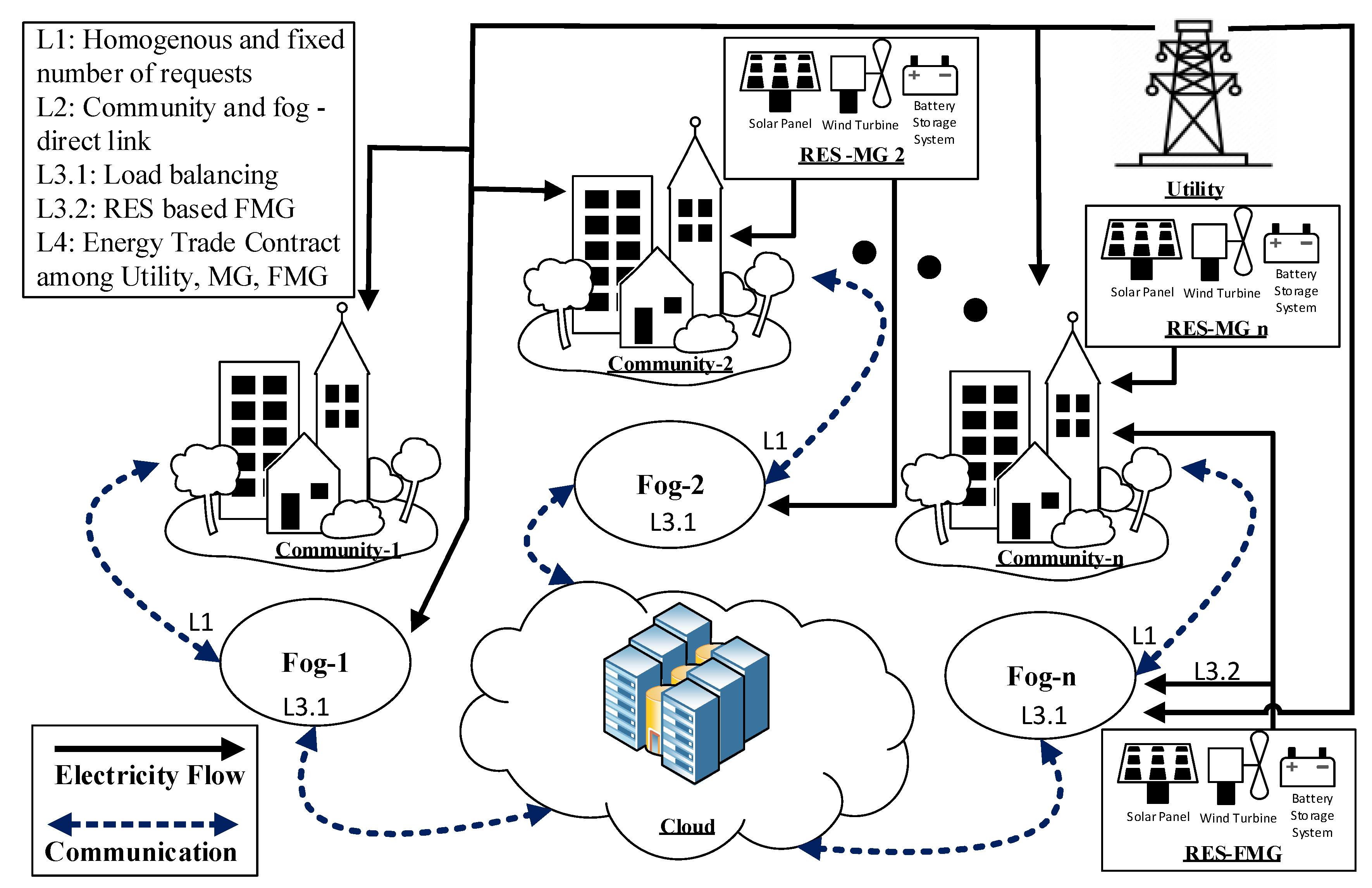
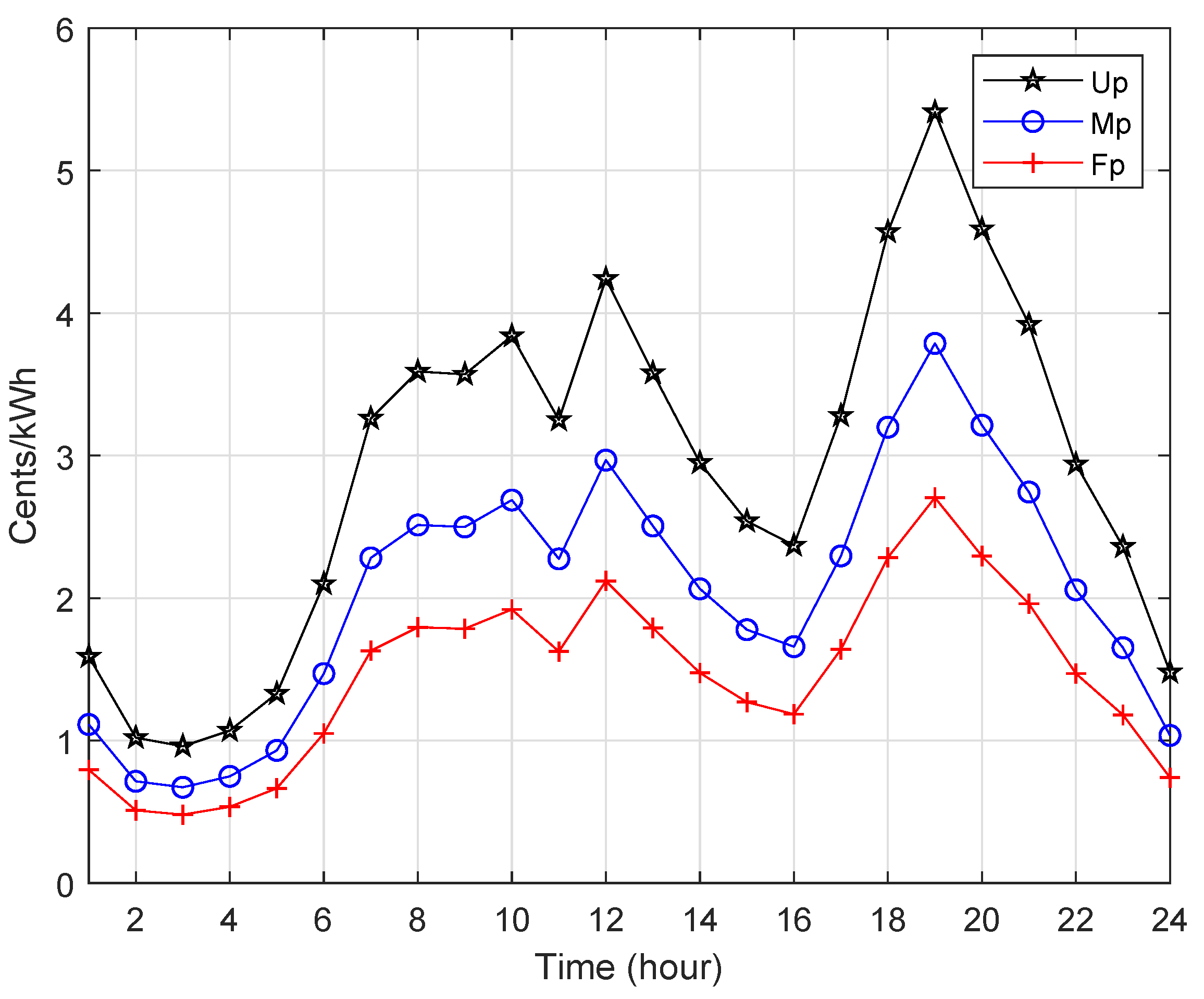
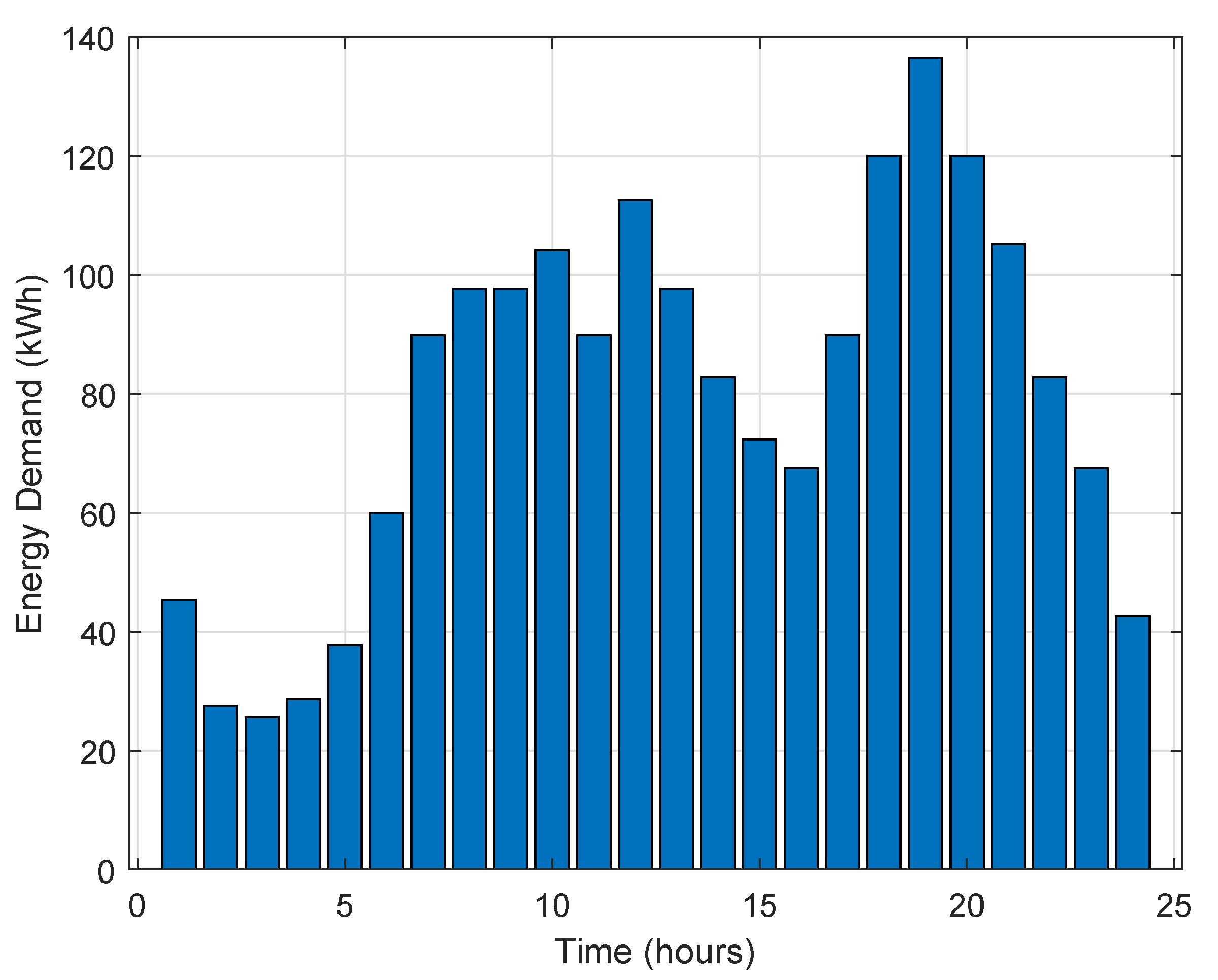
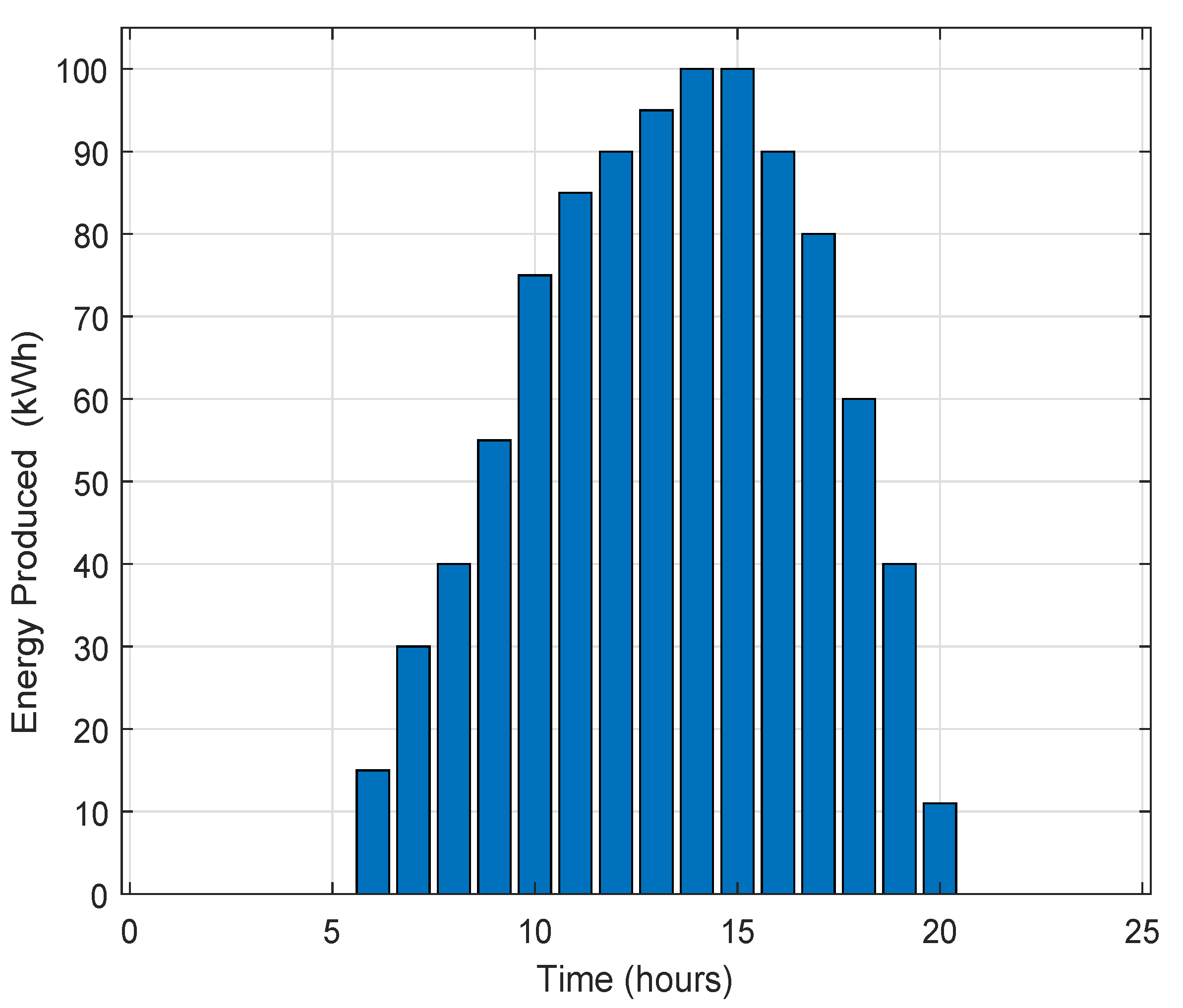
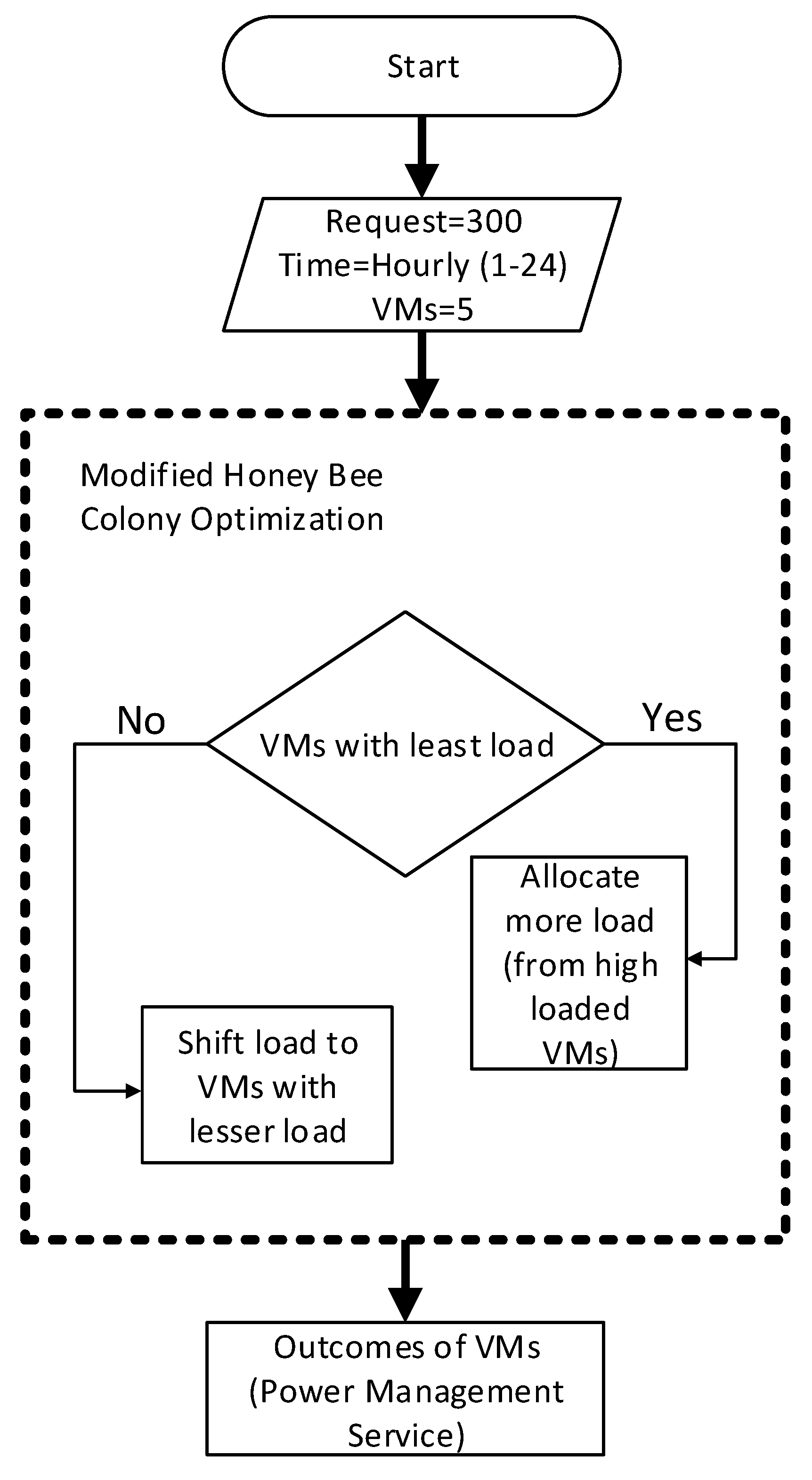
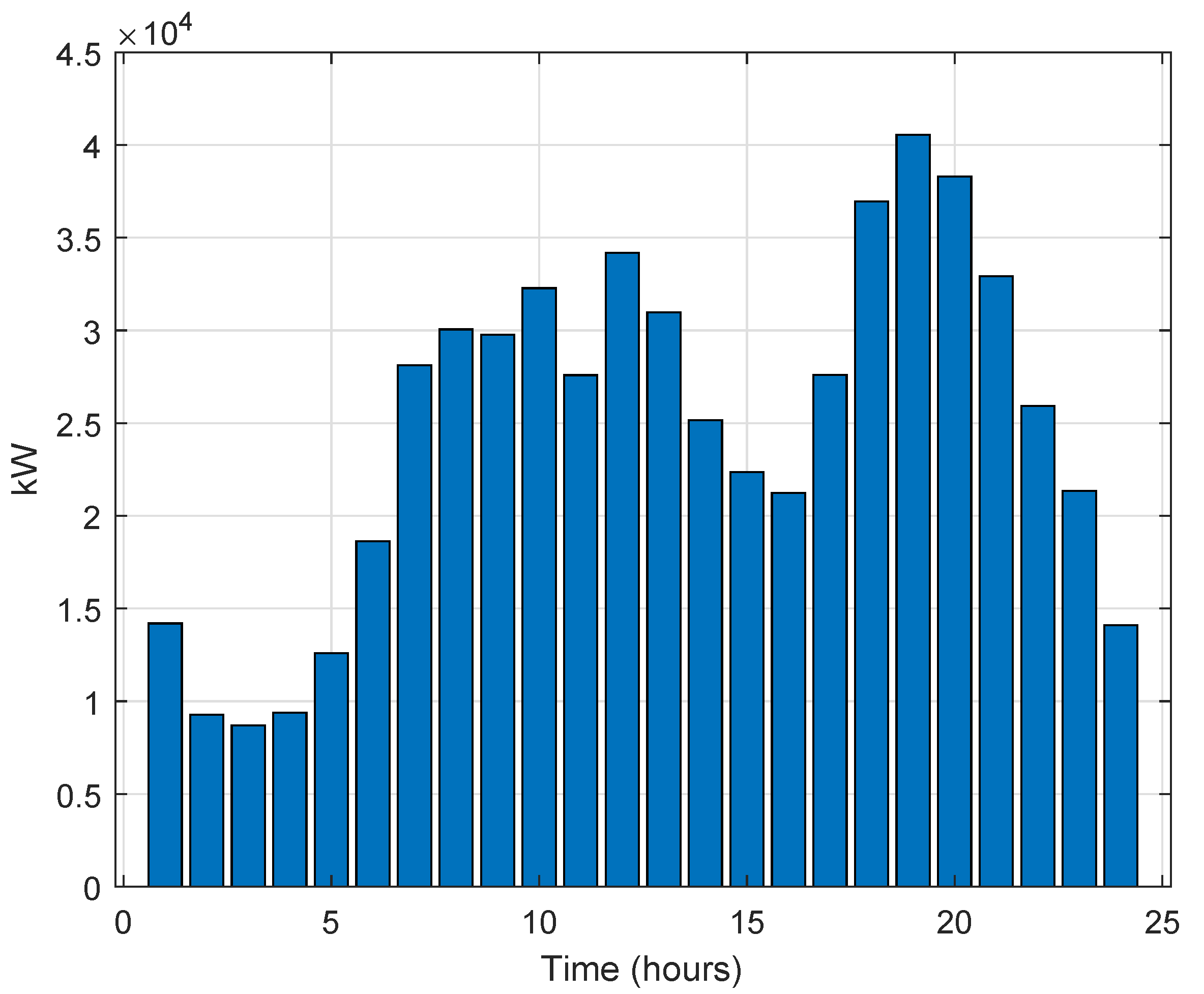
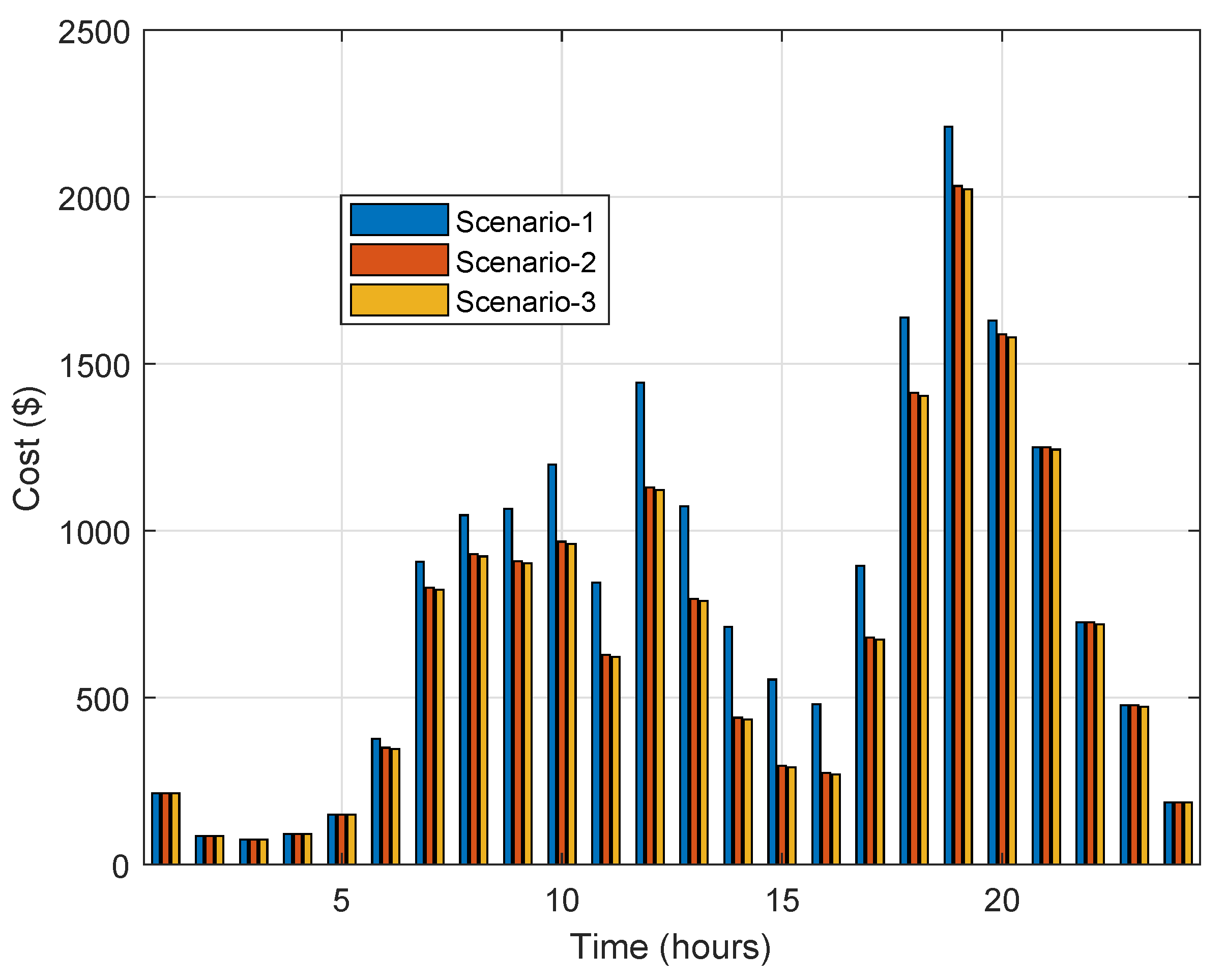
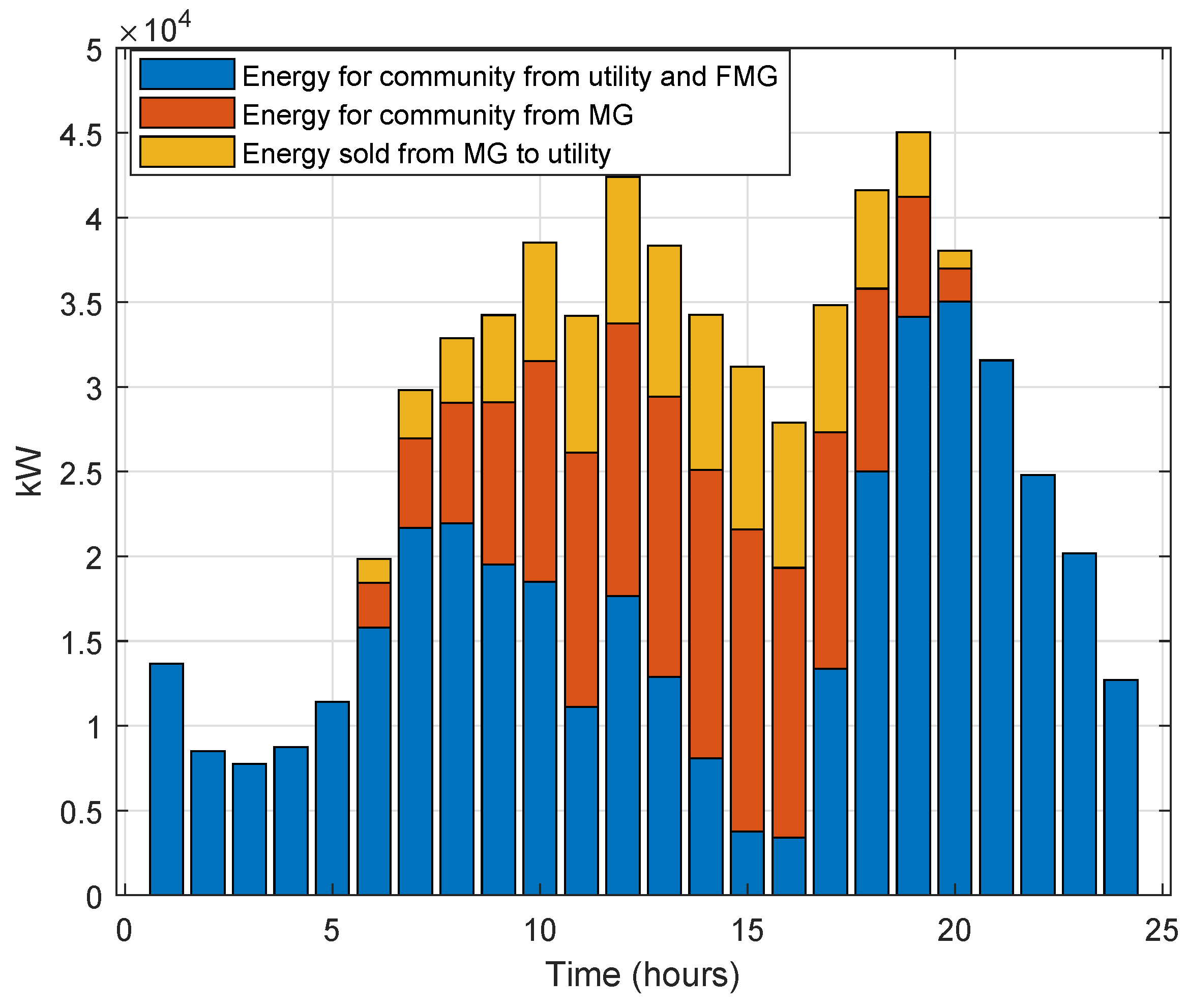
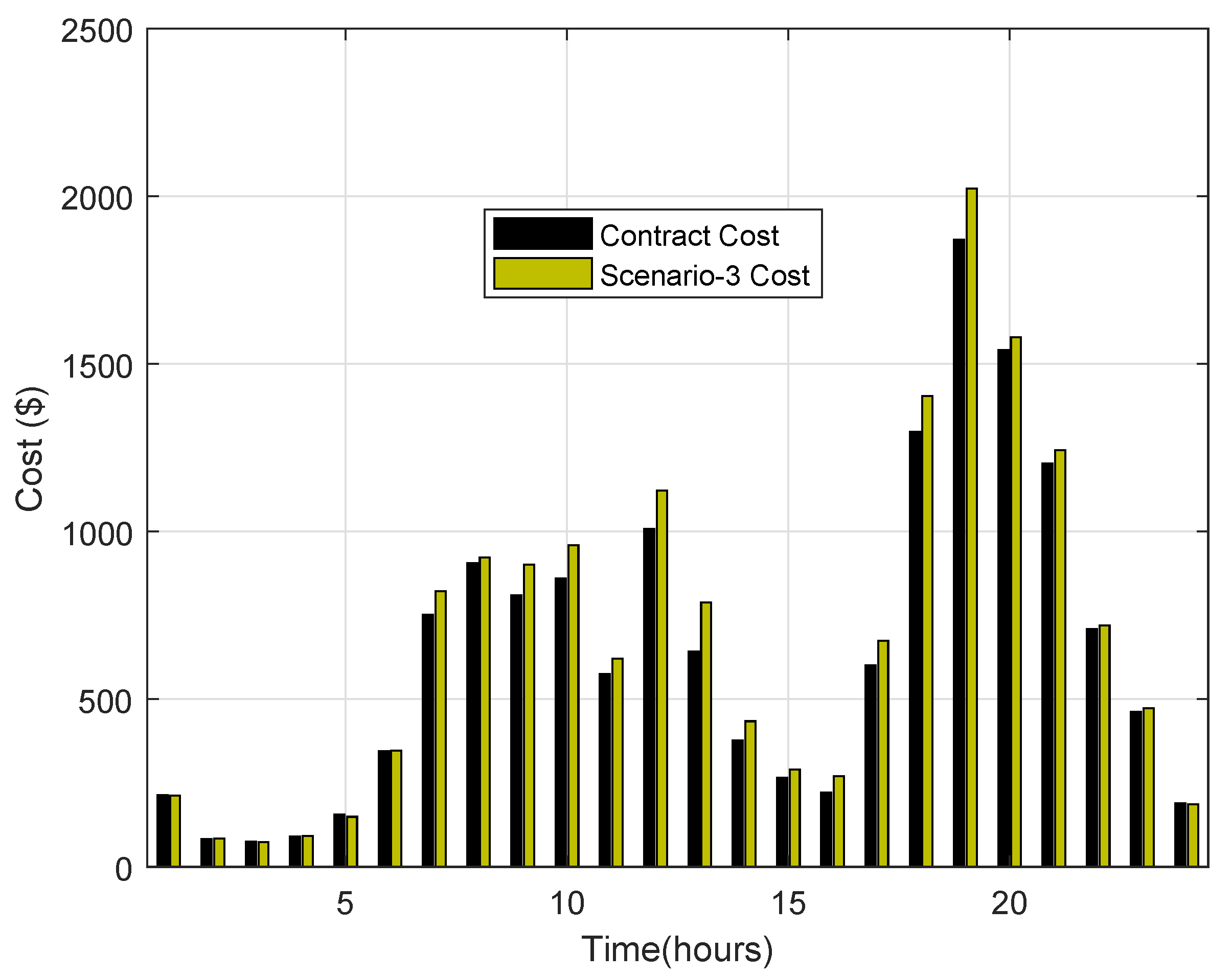
| Authors | Proposed Solution | Limitations |
|---|---|---|
| Kong et al. [34] | Radio frequency based device-to-device communication following the topology of grid. The residents of the community are allowed to generate and trade renewable energy in peer-to-peer fashion. | The number of participants and effects of communication delay on energy trade are essential to identify. |
| Zepter et al. [37] | Proposed a platform for prosumers to trade battery based energy while connected with utility power lines. Prosumers participate in whole market and peer-to-peer trade is perfromed. | The platform has potential to increase the energy trade by introducing centralized computation for cost efficient energy utilization. Moreover, prosumers may trade with more suitable distant consumers. |
| Zhang et al. [38] | Game based energy contract for prosumers is proposed to encourage maximum participation by signing direct contract. | The contract is proposed for small scale environment. |
| Qin et al. [39] | Proposed energy contract for flexible market. The authors left open questions for identification of possible limitations. | The minimum intervention of system operators, controllers and reduced communication lead to security issues. |
| Chen et al. [40] | Proposed cloud based centralized energy management service. The integration of renewable energy from electrical vehicles and storage systems is maximized by incentivizing using power trade mechanism. | The processing time increases with the increase of participants which increase the response delay. The delayed response has negative effect on the system. |
| Toprak et al. [43] and Jawad et al. [44] | In [43], a software tool is proposed to estimate power demand by data center with optimized cooling system. In [44], optimization of workload in data center considering various power source, e.g., renewable power and fossil fuel based power generators. | The software based tool may not include all parameters required for energy optimization, e.g., as authors did in [44]. However, method in [44] may require some software or simulator to estimate the cost. |
| Xu et al. [45] | Proposed reinforced learning technique to schedule the tasks on computing resource in data center. Authors proved reduced energy consumption with efficient resources allocation for computation. | The authors did not discuss the load of tasks for suitable efficiency of scheduling of job. |
| Problems Identified | Proposed Solution |
|---|---|
| Chen et al. [22], proposed cloud based energy management model. The PT increases with the increase of customers (e.g., from 500 to 1500 customers), moreover; authors do not discuss the effects of RT. | Fog based energy management model is proposed. The end-users are directly connected with the fog for power management services. The computing resources of fog are sufficient for requests of 300 SHs to process and response in near real-time. |
| Miodrag et al. [24], validate the efficiency of fog based monitoring and control service in SG as compared to cloud. Authors claim potential of fog based system with real-time monitoring and controlling in SG. However; prime focus is communication protocol for real-time monitoring. | Fog based energy management services, PT and RT are computing for a community of 300 SHs. |
| Saeed et al. [25] propose game based thermal aware resource allocation in data center (cloud) to reduce the emission of thermal energy due to high computation. Authors claim the proposed technique avoid creating hotspots as compared to counterpart strategies. The services run by the data center and possible amount of thermal energy produced are not discussed. | A mechanism to calculate the amount energy produced due to computation in fog’s data center explained. Moreover, the relationship between energy produced due to computation and power required for cooling system for power management services is proposed. |
| Authors in [46] propose VM placement technique to reduce carbon emission from cloud data centers. Green energy is beneficial to reduce carbon, however; huge platform of cloud requires an agreement between users and cloud service providers. Authors claim reduced energy cost, reduce emission of carbon and suggest integration of green energy for cloud data center. However, agreement of integration of green energy is not proposed. | A modified honey bee colony optimization technique is used to balance the load on VMs to enhance the computing efficiency. An agreement (contract) is proposed to integrate utility (fossil fuel based power generator), RESs based MG for community and FGM. The contract reduce energy cost and encourage the integration of renewable energy with incentives to the participants. |
| Thiago et al. in [27] conducted an intensive survey on energy efficiency and demand response for small and medium data centers. Authors claim that large data center have potential to participate in energy efficient demand response program; however, small and medium data centers are more adoptive for the program. The violation of energy policies by energy consumers also have negative impact. | Proposed system model with energy management services validate the claim of suitability of medium (fog’s) data centers for energy efficiency. Moreover, the proposed energy contract runs on the fog as service, which avoid the interruption of end-power-users. |
| The authors in the above articles in this column discuss either computing platform or energy management. None of the author has proposed efficient solution for considering both. | In this paper, a system model is proposed for energy management service for community of 300 SHs. Energy management services are proposed considering different power sources to reduce energy cost by integration of green energy and incentive policy. The power demand for computing environment is calculated and fulfilled with multiple power sources with minimum cost. |
| Parameters | Values |
|---|---|
| Operating System | Linux |
| Virtual Machine Manager | Xen |
| Architecture | X86 |
| Physical Units | 2 |
| Processors (each unit) | 4.4 |
| VMs | 5 |
| Memory | 12 GB |
| VM Speed | 10 MIPS |
| Parameters | Values |
|---|---|
| Total requests in a day | 7200 |
| Average PT | 0.48 ms |
| Average RT (4G) | 50.10 ms |
| Limitation Number | Limitation | Proposed Solution | Validations |
|---|---|---|---|
| L1 | Heterogeneous and too many requests on cloud increase the PT | S1 | Homogeneous and fixed number of requests from community to the fog. 300 SHs directly request the fog for cost efficient power management every hour |
| L2 | Long physical distance between end-users and computing resources increase the RT due to multiple nodes between them | S2 | Direct link between end-users (community) and the fog to reduce network latency. The Table 4, shows 50.18 ms of average RT |
| L3.1 | Computing devices heat due to high computation | S3.1 | Load on computing resources are balanced intelligently (e.g., Modified Honey Bee Colony Optimization) for efficient utilization. The Table 4 shows very small average PT due to efficient resource utilization |
| L3.2 | Increase service cost: high power demand due to computation and cooling system(s) | S3.2 | Installed RES based FMG and connect with community MG for cost efficient power supply. The Figure 7 shows the cost efficient power in third scenario and in Figure 9 the contract based energy is cost efficient due to RES based MGs. |
| L4 | Expensive fossil fuel based power supply from the utility | S4 | Contract for energy trade is proposed to integrate utility, MG and FMG cost efficient and environment friendly power supply. The Figure 8 shows integration of renewable energy during day to fulfill power demand. The Figure 9 shows that contract based energy consumption is more cost efficient as compared to third scenario |
© 2020 by the authors. Licensee MDPI, Basel, Switzerland. This article is an open access article distributed under the terms and conditions of the Creative Commons Attribution (CC BY) license (http://creativecommons.org/licenses/by/4.0/).
Share and Cite
Bukhsh, R.; Javed, M.U.; Fatima, A.; Javaid, N.; Shafiq, M.; Choi, J.-G. Cost Efficient Real Time Electricity Management Services for Green Community Using Fog. Energies 2020, 13, 3164. https://doi.org/10.3390/en13123164
Bukhsh R, Javed MU, Fatima A, Javaid N, Shafiq M, Choi J-G. Cost Efficient Real Time Electricity Management Services for Green Community Using Fog. Energies. 2020; 13(12):3164. https://doi.org/10.3390/en13123164
Chicago/Turabian StyleBukhsh, Rasool, Muhammad Umar Javed, Aisha Fatima, Nadeem Javaid, Muhammad Shafiq, and Jin-Ghoo Choi. 2020. "Cost Efficient Real Time Electricity Management Services for Green Community Using Fog" Energies 13, no. 12: 3164. https://doi.org/10.3390/en13123164
APA StyleBukhsh, R., Javed, M. U., Fatima, A., Javaid, N., Shafiq, M., & Choi, J.-G. (2020). Cost Efficient Real Time Electricity Management Services for Green Community Using Fog. Energies, 13(12), 3164. https://doi.org/10.3390/en13123164








